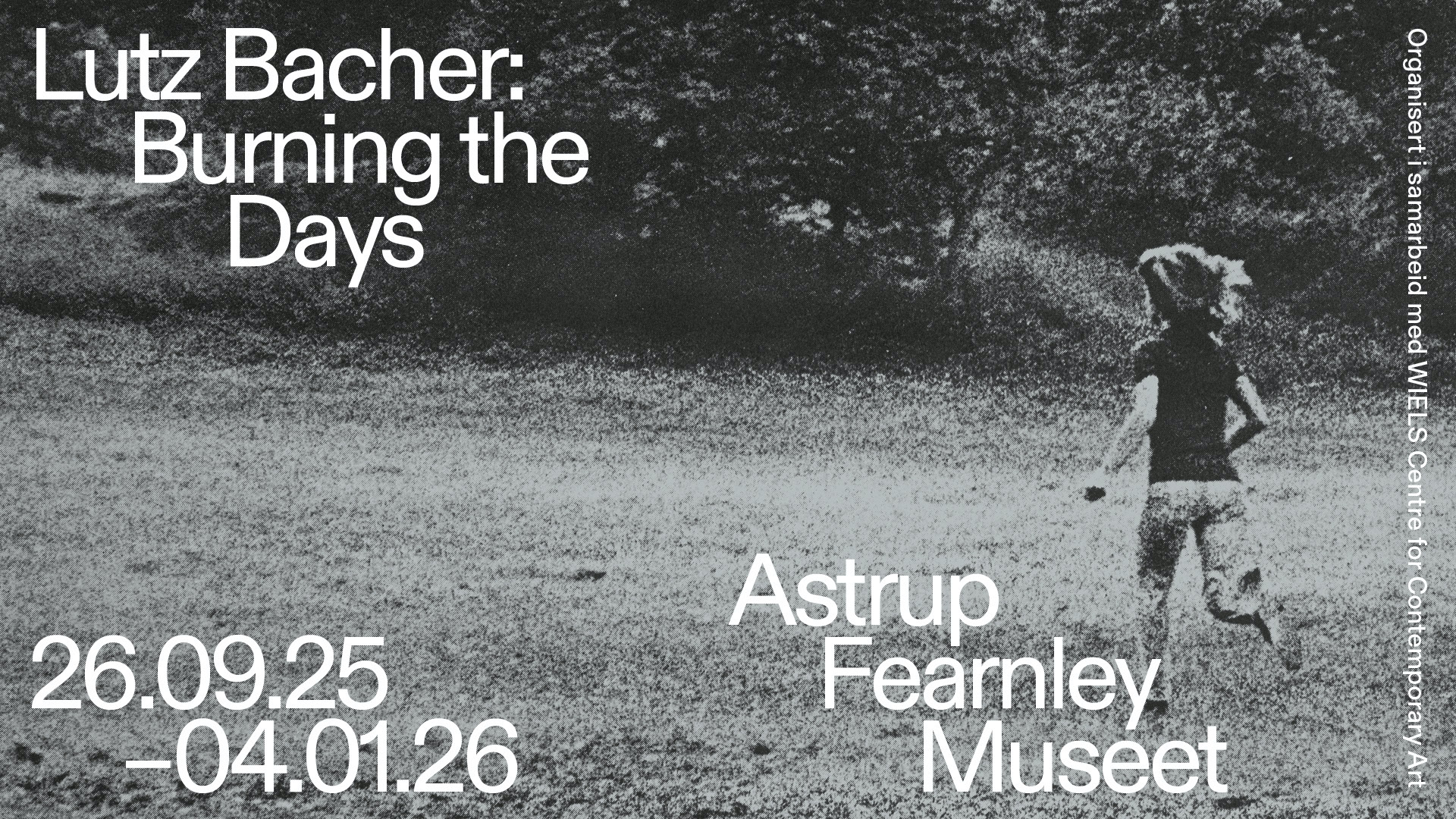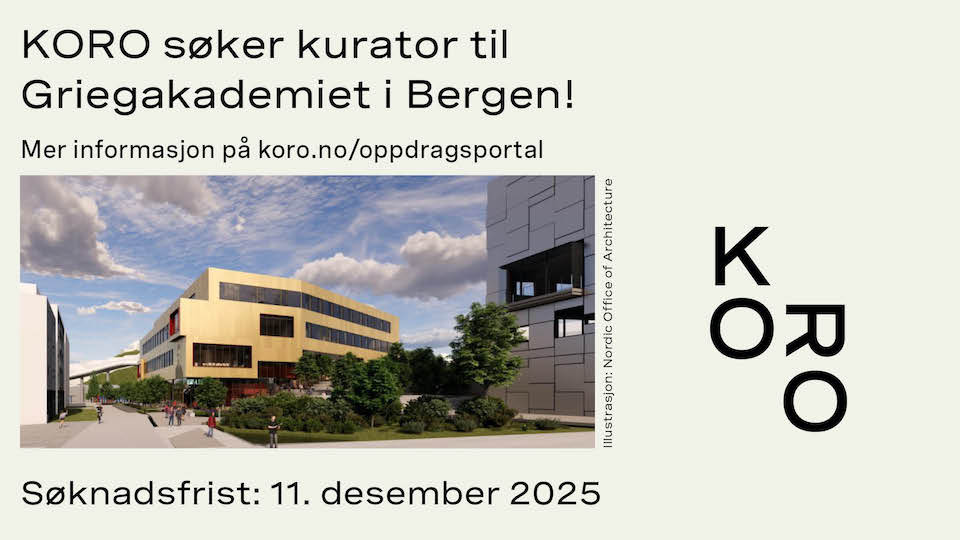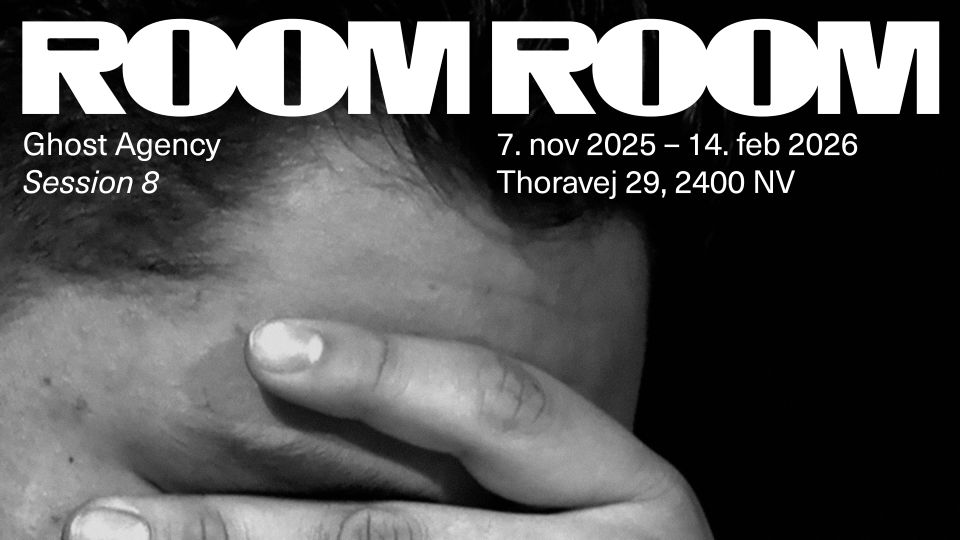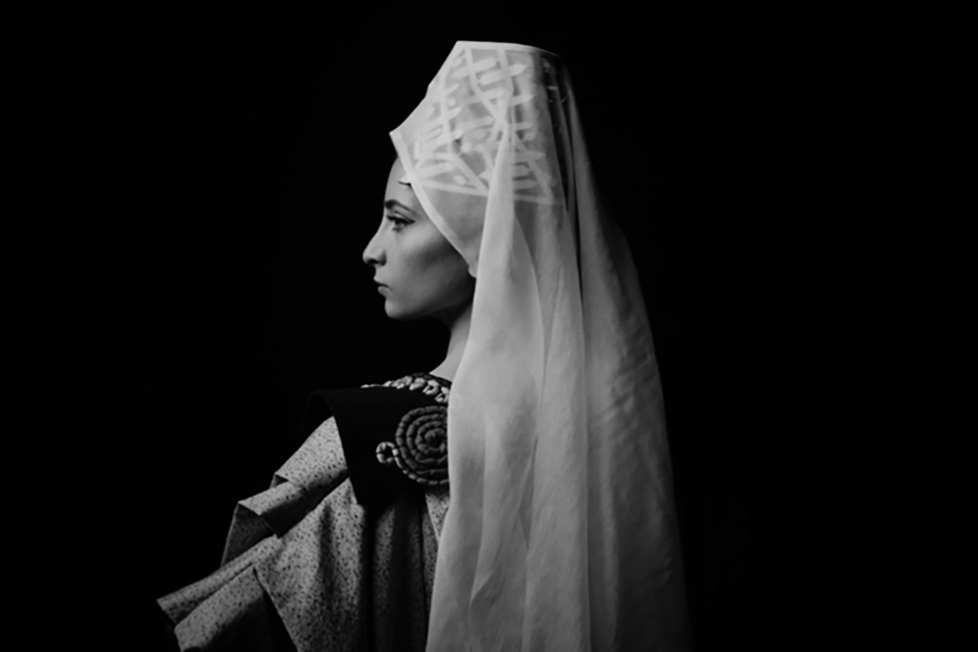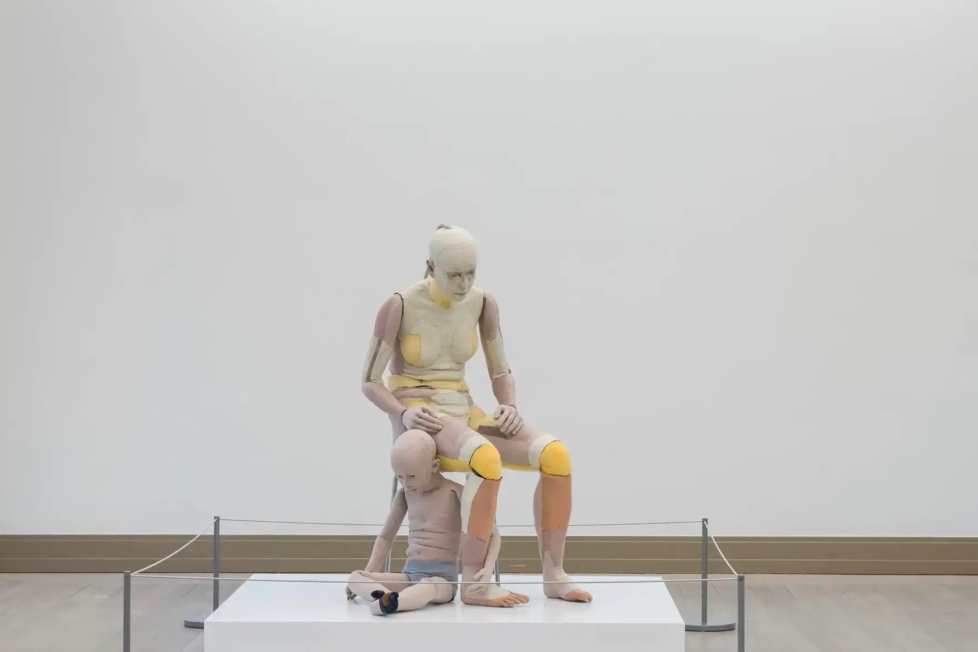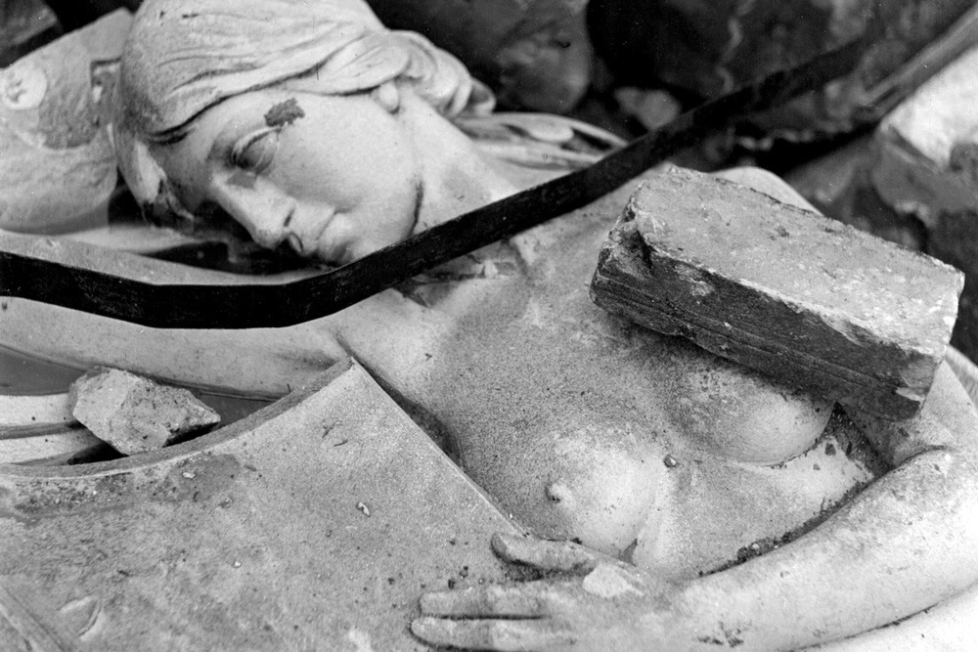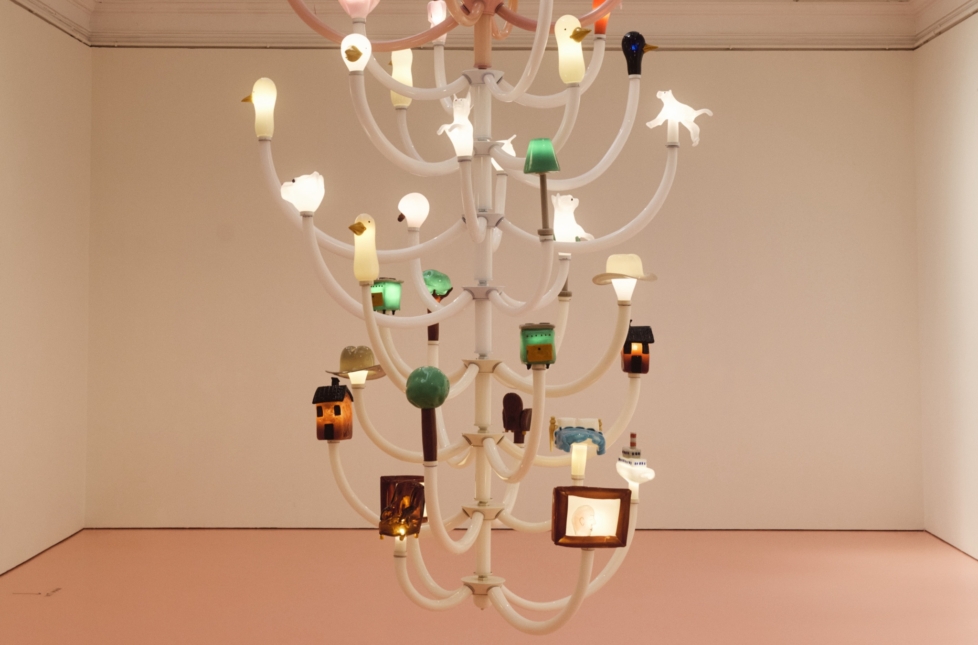
In a Norwegian context, the venue Fotogalleriet has taken on particular responsibility for nurturing the photobook as an artistic genre, with events such as Photobook Festival Oslo and Nordic Dummy Award, which it organises together with The Norwegian Association for Fine Art Photographers. With Le Book Club, it has dusted off the informal forum of the book club, inviting audiences to take part in a five-week conversation on what kind of exhibition space the photobook is and can be. The starting point of the conversation is an experimental exhibition format arranged in five ‘chapters’, supplemented by a discursive programme and a mini-bookstore (a satellite of the Paris-based Librairie Yvon Lambert), the totality curated by Antonio Cataldo, artistic director of Fotogalleriet in Oslo, artist Nina Strand, and Anna Planas and Pierre Hourquet from Temple studio in Paris.
Tables and stools are placed in the gallery space throughout the exhibition period, and are rearranged every seven days as new content is displayed on the tables and in some of the columns on the walls. As of this writing, two chapters have been completed and a third has just been launched. So far, the exhibition’s most striking feature appears to be the gap between the three sub-projects, each of which provides completely different answers to the question of what kind of exhibition space the photobook can be. While two chapters remain to be seen, it is nevertheless possible to glean the contours of an overall insight: that the exhibition space of the photobook is not a specific physical entity, but rather an event that is continually realised anew.
In the first chapter, a collaboration with Paris-based Zines of the Zone, the photobook appeared first and foremost as a mobile vehicle for expression. Zines of the Zone is a mobile library containing some two thousand self-published photobooks and photo-based fanzines. Gilhelm All and Julie Hascöet, the duo behind the project, have embarked on a mission of making marginal publications available to a wider audience, meaning that they are constantly on the road in order to meet local artists, exhibit their collection, and obtain new publications. Oslo is no exception. Prior to the exhibition, invitations were issued to the various Nordic countries to invite contributions, and more than seventy works were submitted in response; all were presented at Fotogalleriet alongside some 130 works from the pre-existing collection.
The nomination of Christina de Middel’s The Afronauts and Mishka Henner’s Less Américains, both from 2012, for the prestigious Deutsche Börse Photography Foundation Prize that same year, is regarded as a milestone within modern self-publishing. The nominations demonstrated that self-published photobooks had an artistic credibility that self-published literature cannot match, and since then, self-publishing has been a growing trend within the field of photography. The large number of pieces submitted – more, I was told, than Zines of the Zone has ever before received as the result of one open call – confirms the impression that this trend asserts itself strongly in the Nordic countries. The trend is interesting in itself, pointing to a position which views the photobook as a personal statement, and thus to an expansion of the photobook as a genre encroaching on the amateur-driven field of fanzines. That expansion materialises convincingly in the first edition of Le Book Club.

Le Book Club’s second chapter applied a narrower focus. This section of the exhibition was devoted to the collected publications of German artist Wolfgang Tillmans as well as a selection of his magazine and poster work, on loan from the collection of the French bookseller Christoph Daviet-Thèry. Despite the obvious qualities of the oeuvre, I still regard this chapter as the weakest so far. The reason? The exhibition fails to fully convince me of its insistent claims regarding the photobook’s special significance for Tillmans’s project.
This is not to say that the photobook does not play a central role in Tillmans’s art. Rather, it means that the gallery space is the primary venue for his project, which is borne by a curatorial rather than photographic strategy. As Daviet-Thèry and critic Sara R. Yazdani suggested in their opening-day talk, Tillmans works on the basis of a comprehensive archive of photographs of different origins, quality, and genre. This archive forms the starting point for the artist’s continuous efforts to rearrange, re-contextualise, and not least remediate his photographs in a process that blurs the boundaries between private and collective identity, as well as between high and popular culture.
Tillmans’s photobooks often appear as compressed or washed-out versions of this curatorial project. Tellingly, it was two sets of photographs presented in both the magazine format and on the wall which most strikingly realised Tillmans’s curatorial strategy. The sneaking sense that the photobook exhibition failed to completely incorporate the migration that photographs undertake in Tillmans’s work was reinforced by the exhibition’s lack of differentiation between the photobook (as a work of art) and catalogues (that primarily illustrate the artistic project).
The third chapter of Le Book Club was launched Wednesday 29 January and is still on. This part of the show is based on Marie Sjøvold’s most recent photobook, The Practice of Presence (2020). It comprises four separate print publications set in a black box, each exploring a particular aspect of Sjøvold’s experience of staying away from the Internet and social media for one year. At Fotogalleriet, the work is presented as miniature exhibitions arranged on four tables, each imposing a different set of conditions for the reader’s experience of the work: the first table invites visitors to engage in an intimate interaction, with stools set apart; the second table opens up the opportunity to explore the work with others; the third table presents the photobook in a static form under glass, with each of the four publications opened to show a particular spread; the fourth table in turn invites visitors to open each of the four publications to the page that attracted them the most, leaving it open for the next reader as part of an ever-changing exhibition.
Passing from one table to the next introduces changes to the reading situation, which in turn affects our perception of The Practice of Presence, thereby affecting the meaning and significance of the photobook. These shifts in meaning do not always lend themselves to easy articulation, but over time it becomes productively palpable. As such, Le Book Club’s third instalment becomes an exploration in four parts of the photobook as an experience – a perspective that is conspicuously absent from the photobook discourse even though contemporary photobook practices are largely about exploring precisely the experiential relationship between the book-object and the reader.
The first three chapters of Le Book Club interpret the photobook as an exhibition space in various ways, exploring it as a means of expression, curatorial work, and experience. Still, the overarching curatorial project creates unity out of this diversity, bringing the chapters together as heterogeneous expressions of the same point: that the photobook’s exhibition space is created in the singular meeting between book-object and reader within a physical and social context.

